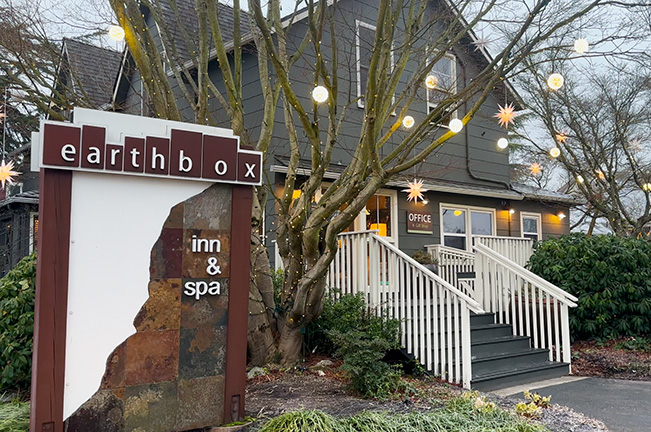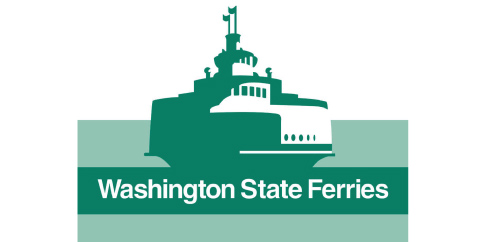IMPORTANT VIDEO: State Rep Greg Nance explains HB 1923, the ‘Mosquito Fleet Act’ – Committee hearing is Wednesday
If enacted, the new law could lead to improved life for San Juans’ inter-island travelers and citizens of other seaside towns by creating more freedom of movement
IMAGINE: A trip to see a doctor in Bellingham. Using a foot ferry and a ground shuttle could turn a 4-hour one-way trip to Peace Health Medical Center into a 1-1/2 hour trip.
Nance’s bold bill has a hearing in State House Transportation Committee Wednesday. Citizen input is crucial.
Saturday, February 15, 2025
by Jeff Noedel
A SanJuans.Today VIDEO IS AT THE BOTTOM OF THIS PAGE
Let’s be clear on one thing before you read on. Washington State Ferries will continue to run the big ferries in the San Juans, possibly forever. And every leader in state government we’ve asked says the promise to reinstate WSF’s Sidney, B.C. route in 2030 is real — presumably when new boats start coming back on line in the late 2020’s and the MV Chelan, WSF’s only SOLAS (Safety of Life at Sea) vessel, can return to ferrying cars and tourists between terminals in Anacortes, the San Juans, and Sidney.
This article is about the idea of a second layer of marine passenger transportation that wouldn’t even be run by WSF.
Today, for many citizens of the San Juans, “foot ferries” are a non-solution. Once one arrives at the Anacortes terminal, there are many miles more to go to the doctor, the concert, or the game on the mainland. And practical, swift, affordable mass transit from the terminals in Anacortes (as well as Orcas Island, and Lopez Islands) doesn’t exist…yet. Only Friday Harbor’s proximity to docks allow one to hop off a boat and walk anywhere in town. San Juans ferry users, they say, must use their cars.
But 1,000 times since August 2023, Captain Tom Bridge of Crane Island has proven passenger-only taxi service does work, especially when WSF sailings were canceled. One thousand times, Bridge has moved someone on his small boat to or from a job, or an infusion at Peace Islands Medical Center. He moved a group of young people from Orcas to San Juan Island’s PRIDE festival. He moved Santa and Mrs. Claus from Orcas to a Friday Harbor Christmas party for children. And none needed their car.
- What if San Juan County had “passenger-only ferries” between the islands, which offered more trips throughout the day, and more options for crossing times?
- What if those boats were smaller (seating 12 or 20 passengers), easier to board, and very comfortable? (They would look similar to some of the whale-watching boats.)
- What if those foot ferries moved you between the islands in half the time of the big car ferries?
- What if those foot ferries used a fraction of the fuel the big boats use?
- What if — in addition to those “foot ferries” — new shuttle services on Orcas and Lopez Islands connected the passenger-only dock to Eastsound and Lopez Village?
- What if those new foot ferries made so much sense to tourists that they would happily pay a major portion of the cost to run this service?
- What if one of those foot ferries was a SOLAS vessel and could restore passenger-only trips between Sidney and Friday Harbor in the years before 2030, re-establishing the marine connection between the San Juans and Vancouver Island much sooner?
- What if this kind of innovation spread all over the State of Washington?
Eight days ago, State Rep. Greg Nance (D-23rd) of Bainbridge Island filed a new bill in the House of Representatives: HB 1923, the “Mosquito Fleet Act.” It was assigned to the House Transportation Committee, and the bill’s make-or-break hearing in Wednesday at 4:00 p.m.
The San Juan County government is already experimenting with passenger-only ferry solutions. Former Governor Jay Inslee arranged for the County to receive $1.5 million to create temporary pilot programs to augment WSF service, including during periods of canceled sailings. Those County pilot programs are expected to become a reality in April. But the Washington State Commerce Department grant will expire in 2025. Mosquito Fleet Act funds could make help successful San Juan County pilot programs last for years more.
In the exclusive SanJuans.Today video below, Representative Nance explains the ideas and goals that animate HB 1923, with its proposed $50 million price tag. It was recorded Thursday evening. He speaks directly to citizens of the San Juans, as well as citizens of all Washington communities that might imagine the benefits of a New 21st Century Mosquito Fleet.
This SanJuans.Today video is approximately 24 minutes in duration.
Here are ways you can impact the hearing Wednesday, and how to watch it live.
To sign-up to testify in favor or against HB 1923, click here.
The 27 members of the Washington State House of Representatives Transportation Committee are listed here, in case you want to contact them or their offices.
To watch the hearing live at 4:00 p.m. Wednesday*, visit TVW, the public affairs television channel that covers Washington state government like no one else.
* Not guaranteed that TVW will air this particular committee hearing, but it might.

SanJuans.Today news and programming is made possible in part by underwriting from Earthbox Inn & Spa. Family-friendly luxury with a year-round indoor pool.







I have only been on the island for about 8 years, but I understand there is some history around the formula for funding ferries? I believe it involves a state representative who didn’t think non-islanders should have to pay for ferries through taxes? I’m sure I have all of that history wrong, but a piece on that history might be interesting, and valuable.
Thank you Jeff, we will look into this.